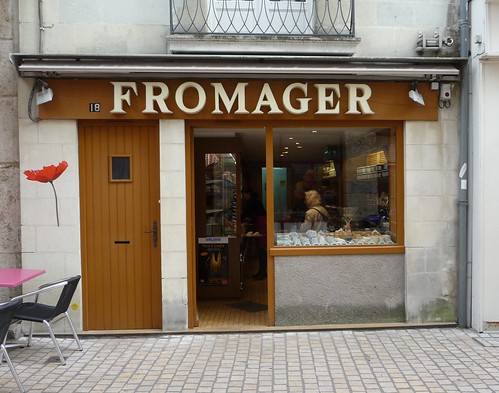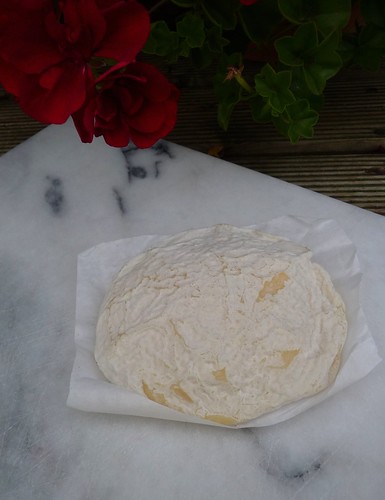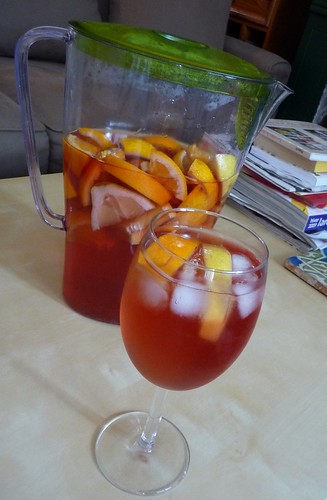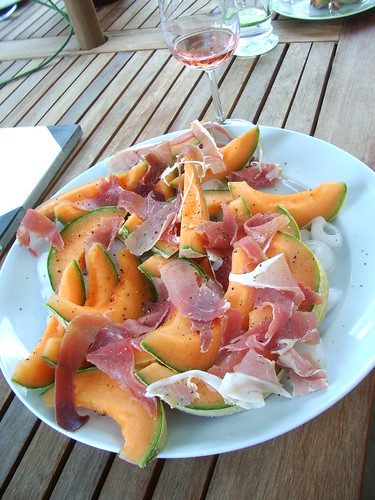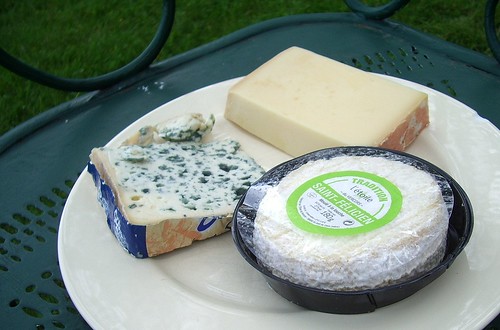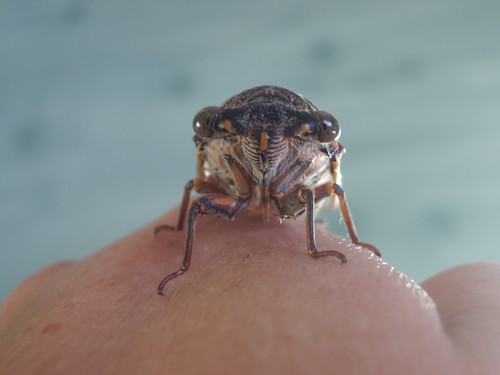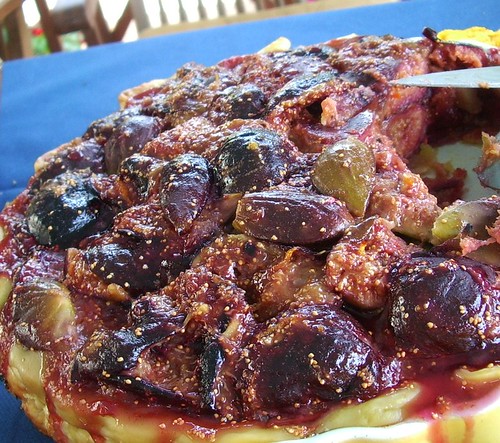La Fête du Fromage - Le Galletout
My endless pursuit to taste every French cheese means that any time we take a trip in France, some of our holiday time must be devoted to tracking down a Fromagerie or two. Or three.
I have a very patient husband.
Before each trip I try to do some research online, but it really is surprising how many cheese shops and cheese makers either don't have websites of their own or attempt to include up to date information, like opening days and times, on public websites run by the local Mairie.
So most of the time I just ask for recommendations from the locals.
During our morning of wine tasting at le Tasting Room in the Loire last October, the owner, Cathy, mentioned her favorite little Fromagerie in Saumur. She couldn't remember the name or the address, but described where it was in relation to a couple of the well known landmarks in town. I finally found the charming little shop, tucked back on a little lane between the river and la Place Saint-Pierre.
Being that we were in the Loire Valley, home to many famous fromages de chèvre, I expected a decent selection of goat's cheeses.
I was not disappointed.
Le Galletout was the first one that caught my eye.
It looked so intriguing; like a crumpled, pale mushroom cap or cloud of meringue. I always seem to be attracted to unconventional looking cheeses.
Its flavor is sublime! Cutting through the thin, bloomy rind reveals a dripping, oozing, velvety textured pâte that tastes like a goat's cheese, but not an overly strong, goaty one. The perfectly balanced flavors are slightly tangy, with hints of soft citrus and milk.
Le Galletout is an unpasteurized chèvre produced in the Lot, in southwestern France. It can be eaten young and mild, after only two weeks of affinage, or it can be aged a little bit longer if a stronger flavor is preferred.
Pair with a Pouilly Fumé.
Apricot Stuffed Pork Loin: Recipe

A few years ago I discovered a wonderful mustard at the Fancy Food Show. I wrote about it and not long after it won the gold prize at the Napa Valley mustard competition. That was just one in a long line of award winning products. Pam Kraemer founder of Dulcet Cuisine has a real knack for creating outstanding mustards, sauces, and now ketchups.
I'm always excited to try new products from Dulcet Cuisine and play with them. Kraemer uses very high quality ingredients and isn't satisfied until her products are the best they can be. They don't just make great condiments, they really shine as ingredients in recipes. She usually does all her own recipe development, but now and then I get to help out and share my creations.
I have to admit, I had never stuffed a pork loin before. But it turns out to be very easy and impressive. Rather than butterfly the whole loin and stuff, roll and tie, I just created an incision in the loin and made a pocket large enough to accommodate a very savory and sweet stuffing with a kick of spice. This recipe uses Dulcet Cuisine's wonderful new Sweet Orange Chili Mustard as part of the filling and the glaze. It's sweet and has a real kick to it and a rough texture. Once you have the basic technique down, you can change this up any number of ways--use different kinds of bread, dried fruit, liquid, mustard, etc. I think it would be a great dish for a dinner party.
Apricot Stuffed Pork Loin
serves 4 - 6
1 boneless pork loin roast, about 2 1/2 lbs
2 Tablespoons oil
Salt
Stuffing:
1 cup wheat bread cubed, about 2 slices
1/2 cup dried apricots, chopped
2 cloves garlic, minced or pressed
2 Tablespoons Sweet Orange Chili Mustard
2 Tablespoons orange juice
1/2 teaspoon salt
1/4 teaspoon black pepper
Glaze:
1/4 cup Sweet Orange Chili mustard
1 Tablespoon honey
Heat oven to 350 degrees. Make a hole for stuffing that runs lengthwise through pork loin. Insert a sharp long thin knife lengthwise toward center of loin, then repeat at opposite end of loin to complete incision running through middle.
Combine the stuffing ingredients and mix well. Stuffing should be very moist. Open up incision with your fingers, to create a 1 1/2-inch-wide opening, then fill with stuffing, pushing from both ends toward center.
Pat pork loin dry and and season well with salt. Heat oil in a 12-inch heavy skillet over high heat until very hot, then brown pork on all sides, about 2 minutes.
Place stuffed loin on rack in a foil-lined roasting pan. After 30 minutes, baste with the glaze, baste again 15 minutes later. Roast to about 160°, about 1 1/2 hours.
Enjoy!
Praise for the pig
Here in Seattle, something is going on. Sunlight is pouring in through my bedroom window at an obscenely early hour (sunrise: 6:05 am), daffodils are sprouting from every yard and florist, and my portly bus driver—the year-round optimist—is no longer the only one wearing shorts. This has nothing to do with the vernal equinox or that start-of-spring nonsense everyone is twittering about. No, dear
July Mid-Month Meal Inspiration: Last Call

Summertime and the living is easy...and you have certainly found a few great recipes floating around the blogosphere. I know I have.
Make sure to send links to them to me, right here on this post, for the July 2007 version of Mid-month Meal Inspiration.
Remember, you don't have to have actually tried the recipe. It's even better if you've just bookmarked it!
For an idea of what MMMI is all about, take a look at last month's edition.
Happy Thanksgiving!
I don't do Thanksgiving in France, so no food news to report.
But if you're interested, you can find my Thanksgiving post here.
But if you're interested, you can find my Thanksgiving post here.
Our South of France, Part I

When I tell people I live in the south of France they always envision the beautifully colored lavender fields of Provence or the sun washed villas along the coast of the Côte d'Azur.
No, we don't live in a villa with a swimming pool or a mas provençal with olive trees and vineyards. We live in a 3 story, small village house in the middle of, well...nowhere.
La France Profonde. We live in the country.
I had to convince one friend that Johnny Depp and Vanessa Paradis are not our neighbors. The only celebrities around here are a well known English wine guru who has a holiday home 15 minutes away and the vineyards owned by Gérard Depardieu and Johnny Hallyday.
As our 84 year old neighbor replied when I returned from a weekend in Barcelona, I've never been to Spain.
Spain is just over an hour's drive away. And she's never been.
She's from the village down the road, all of one mile away, and is married to a local. They live in the house that he was born in and two of their son's, several grandchildren and a couple of cousins live in the village. In fact, if you counted all the members of this family, they probably make up 10 % of the village population. Which is 400.
Well, 402, if you count us.
Our menu
 Le Grand Jeu! Forks and knives for every course: first one to the outside left and right, the small fork and knife for the appetizer, foie gras. Second, fork and knife for the lobster. The third one is for the main course.
Le Grand Jeu! Forks and knives for every course: first one to the outside left and right, the small fork and knife for the appetizer, foie gras. Second, fork and knife for the lobster. The third one is for the main course.Note that later in the day, because I did not want to have yet another type of wine, I decided to start hte meal with the lobsetr and to pair it with Champagne, and then move into foie gras, hence the order of the silverware was changed.
We used one plate per course, a large one for the lobster, then I put smaller dishes for foie Gras, another square red one for the duck and mushrooms, a smaller one for salad and cheese, and a last one for dessert.
 We started with Spiny Lobster Tails, bought over at the local fish mungler, one per person, which I simply steamed for 12 minutes; I served them with a light home made saffran flavored mayonnaise. We paired them with our Champagne.
We started with Spiny Lobster Tails, bought over at the local fish mungler, one per person, which I simply steamed for 12 minutes; I served them with a light home made saffran flavored mayonnaise. We paired them with our Champagne. Then we moved into fresh Foie Gras that I served with a prune chutney, a speciality from South West France. We paired foie gras with a glass of chilled Coteau de Layon from Chateau Soucherie at Layon in the Anjou. I served toasts of brioche bread and country bread to suit all tastes, both from Le Grillon d'Auteuil pastry and bakery shop on rue d'Auteuil.
Then we moved into fresh Foie Gras that I served with a prune chutney, a speciality from South West France. We paired foie gras with a glass of chilled Coteau de Layon from Chateau Soucherie at Layon in the Anjou. I served toasts of brioche bread and country bread to suit all tastes, both from Le Grillon d'Auteuil pastry and bakery shop on rue d'Auteuil. The main course was La Comtesse de Barry duck preserve or confit de canard served on a round silver serving dish from the refined French silver manufacturer Christophle.
The main course was La Comtesse de Barry duck preserve or confit de canard served on a round silver serving dish from the refined French silver manufacturer Christophle. I decided to pair the duck with a 2000 Pomerol, served at perfect room temperature.
I decided to pair the duck with a 2000 Pomerol, served at perfect room temperature.
The garnish of cepes mushrooms, also a preserve from La Comtesse de Barry, had been simply sauteed with a dash of Espelette chili, a thinly sliced shallot, and sea salt.

Then came the salad and cheese. The choice of cheese was obvious: A Mont d'Or or vacherin du Doubs. It's the ideal season to have it! I got it at the cheese shop I have previously praised in this blog, La Fromagerie d'Auteuil, also on rue d'Auteuil.

We really enjoyed this family meal - and the gift opening as well!
A visit to my cellar
 I live in a typical 19C Parisian stone building. These 6-7 storeys buildings have all a similar architecture, and give Paris the feeling of harmony one experiences when visitng.
I live in a typical 19C Parisian stone building. These 6-7 storeys buildings have all a similar architecture, and give Paris the feeling of harmony one experiences when visitng.Every one of these buildings has two floors of basements where the cellars are.
They were meant to store wine - although we now used them as storage of everything we cannot fit in our small flats: suit cases, Xmas decorations, old furniture, tools .. and more.
 The walls are in rough stone and the entrance arched. The doors are pretty rustic!
The walls are in rough stone and the entrance arched. The doors are pretty rustic! We have around 150 bottles stored - and classified - in our cellar. There is always Champagne! I have some fine wines here, such as Pomerols, Saint Emilions, Pauillac, and more. I love Bordeaux wines!
We have around 150 bottles stored - and classified - in our cellar. There is always Champagne! I have some fine wines here, such as Pomerols, Saint Emilions, Pauillac, and more. I love Bordeaux wines! You can see here the stone which contrary to convrete, "breathes" and creates a perfect environnement for wine storage. No need of sophisticated systems that keep temperature and humidity even! Natural materials work great.
You can see here the stone which contrary to convrete, "breathes" and creates a perfect environnement for wine storage. No need of sophisticated systems that keep temperature and humidity even! Natural materials work great. When it comes to whites, my favorite are Sancerre, Pouilly Fume, Chablis, and some Savennieres! The very yellow bottle on top is a Sauternes I keep for foie gras.
When it comes to whites, my favorite are Sancerre, Pouilly Fume, Chablis, and some Savennieres! The very yellow bottle on top is a Sauternes I keep for foie gras.When I buy wine, I ask how long it needs to be stored before drinking it, and how long it can be kept, and I write it on tags that help me find my way when I want a bottle.
Cheers!
Summer
sangria
cerises
sea and sand
Serrano
cerulean
Saint Félicien
cigales
salad
sun (and siestas!)
scarlet
succulent
shade
.
cerises
sea and sand
Serrano
cerulean
Saint Félicien
cigales
salad
sun (and siestas!)
scarlet
succulent
shade
.
Apples for Jam - Jam Shortbread

I'll admit I was seduced by the drizzle of jam seeping out from between the layers of shortbread in Tessa Kiros's photograph of this recipe from her book "Apples for Jam." Any jam will work here, and you can add a thinner or thicker layer to suit your taste. I wish I had gone for thicker, rather than just kind of moistening the shortbread, which is what I did. Raspberry is always my favorite flavor, and a seedless raspberry from artisan jam producer Wilkin & Sons was pretty much perfect, even if I wasn't greedy enough while spreading. I have to admit, though, that I wish I hadn't been too lazy to go down to the farmer's market this morning to get the jam from Berkshire Berries. Their Dandelion Jelly, although not ideal for this recipe because of its subtle taste, is wonderful.
In her book "English Food," resident expert Jane Grigson attributes the scottish shortbread's unique blend of "richness and crispness and lightness" to a combination of both all-purpose flour and either corn flour or rice flour. I decided not to mess with Kiros's recipe the first time around, but another element added to the short bread might make the cookies sing a bit more. Or perhaps I just really needed more jam! I also wonder if a bit of salt might have made a difference. Although neither Grigson nor Kiros call for it, Grigson does specify salted Danish butter for her Viennese shortcake, a slight twist on the basic shortbread recipe that she says used to be "a favorite of English teatables."

Kiros specifies a 12x16" pan, but the closest I got was my smaller-sized jelly roll pan. I had some trouble rolling out the dough, and can't imagine that it can actually be stretched to fill a 12x16" pan in two layers. Mine ended up being much smaller, and the top layer (now the bottom!) had to be patched on. Regardless of aesthetics, when I get lucky enough to find a bite hiding a nice pocket of jam, they are wonderful. The dog bone is the only cookie cutter I have, which makes them look more kitsch than rustic. But that's okay, a little kitsch never hurt anyone!
Jam Shortbread
7 tablespoons butter, softened
1/2 cup superfine sugar
1 2/3 cups all-purpose flour

1/2 teaspoon baking powder
1 egg, lightly beaten
A few drops of vanilla extract
2/3 cup of your favorite jam, more or less
Oven preheated to 325. You're going to want to line your pan (Kiros suggests 12x16" but I found this to be a stretch, literally) in order to pull the cookies out easily for cutting. Work the butter and sugar by hand until they are well combined, then add the four and baking powder. Continue working all of the ingredients together, the batter will be quite crumbly. Finally add the egg and the vanilla and kneed the dough until it holds together in a smooth ball. Refrigerate your ball of cookie dough, wrapped in cellophane, for at least :30, or until cold and firm enough to be rolled out.
Lightly flour your working surface and roll half of the dough out to fit your pan. Spread the jam on this first half, and then roll the second half out to fit over the first. It helps to have brought the jam to room temperature for easier spreading. Bake for around 12 minutes to beginning to grown in places, especially around the edges. Mine never got overly brown. Cool in the pan for 5 minutes, then lift out the paper and start cutting. Cool the cookies on wracks, eat the scraps.
Off the Menu Curry Dinner
Last night I got to attend an Asia Society Off the Menu dinner, and what fun it was. This series explores favorite dishes that chefs have not been able to keep on their restaurant menus. A ticket to one of these events means you get to taste some very special dishes, no matter what the theme. My fellow Bay Area Bites blogger Thy Tran moderated a fascinating conversation between the chefs.
Each participating chef talked about curries from their home countries--India, Malaysia, Indonesia and Thailand and dispelled some common misconceptions.

From India, Ruta Kahate made a beef curry, and shared that beef is eaten by some Indians and that not all curries have lots of ingredients, this one used only three spices.
From Indonesia chef Daniel Sudar made a spicy goat curry called Gulai Kambing that is usually only served once a year but that he plans on putting on the menu at his soon-to-be-opened Red Lantern restaurant.
Alex Ong from Betelnut restaurant made a Nonya style Korma curry with chicken that is normally made with lamb. It was served dry, but was full of flavor. Because the word curry is derived from the Tamil word for sauce, it is commonly believed that all curries are served with sauce, but that is not necessarily true.

One special chef was in fact not a restaurant chef but my friend, food blogger extraordinaire, Pim. She made a curry and didn't use a curry paste. Kanom Jeen Nam-prik is a rice noodle dish with a curry sauce served with shrimp. Pim's Thai restaurant pet peeve is the way curries are served mix-and-match where customers choose the color--red, green or yellow and the meat, usually chicken, beef or pork. In Thailand much care goes into the pairing of the curry and the meat.

Each dish was strikingly different in texture and flavor showing just a sampling of the wide range of curries in a few parts of Asia. I will try to give you a head's up when the next dinner is announced as they frequently sell out.
FOOD
Each participating chef talked about curries from their home countries--India, Malaysia, Indonesia and Thailand and dispelled some common misconceptions.

From India, Ruta Kahate made a beef curry, and shared that beef is eaten by some Indians and that not all curries have lots of ingredients, this one used only three spices.
From Indonesia chef Daniel Sudar made a spicy goat curry called Gulai Kambing that is usually only served once a year but that he plans on putting on the menu at his soon-to-be-opened Red Lantern restaurant.
Alex Ong from Betelnut restaurant made a Nonya style Korma curry with chicken that is normally made with lamb. It was served dry, but was full of flavor. Because the word curry is derived from the Tamil word for sauce, it is commonly believed that all curries are served with sauce, but that is not necessarily true.

One special chef was in fact not a restaurant chef but my friend, food blogger extraordinaire, Pim. She made a curry and didn't use a curry paste. Kanom Jeen Nam-prik is a rice noodle dish with a curry sauce served with shrimp. Pim's Thai restaurant pet peeve is the way curries are served mix-and-match where customers choose the color--red, green or yellow and the meat, usually chicken, beef or pork. In Thailand much care goes into the pairing of the curry and the meat.

Each dish was strikingly different in texture and flavor showing just a sampling of the wide range of curries in a few parts of Asia. I will try to give you a head's up when the next dinner is announced as they frequently sell out.
FOOD
Last Night's Cooking Class at La Cuisine Paris

I have to write about the cooking class I gave last night at cooking school La Cuisine Paris, where I work part-time. It was a group of ten people from the Czech Republic, all expatriated to France.
I've only met one other Czech in my entire life, when I first arrived in Paris and we were both struggling to learn how to conjugate the subjunctive.... Anyway, she was friendly, dynamic, open & fun. So was the group of Czechs last night. Are they all like that??!! (Kidding!) Last night's group was also keenly eager to work, participate, & get "it" done. The "it" was last night's menu consisting of:
Velouté de courgette au lait de coco /
Cream of zucchini soup with coconut milk
Daurade grillé, confit de fenouil d'anis et de vanille, confit de pomme de terre et sauce à l'orange "fondu" à l'huile d'olive /
Pan seared sea bream, fennel "confit" with anise & vanilla bean, potato "confit" & "melted" orange juice-olive oil sauce
Fondant au chocolate aux épices d'hiver /
Molten chocolate cake with warm winter spices
Cream of zucchini soup with coconut milk
Daurade grillé, confit de fenouil d'anis et de vanille, confit de pomme de terre et sauce à l'orange "fondu" à l'huile d'olive /
Pan seared sea bream, fennel "confit" with anise & vanilla bean, potato "confit" & "melted" orange juice-olive oil sauce
Fondant au chocolate aux épices d'hiver /
Molten chocolate cake with warm winter spices

 Keep in mind it was a two hour class, including the dégustation (tasting). After having given several two-hour classes over the past year, I can say that teaching & preparing all of this within two hours is ambitious. But guess what. That's what we pretty much did. The old "work hard, play hard" spirit was alive & kicking in this group. The first hour and a half was spent concentrating on the tasks at hand....and the last half hour was spent enjoying the fruits of labor when everyone could sit down and taste each dish, with a glass of white wine in hand.
Keep in mind it was a two hour class, including the dégustation (tasting). After having given several two-hour classes over the past year, I can say that teaching & preparing all of this within two hours is ambitious. But guess what. That's what we pretty much did. The old "work hard, play hard" spirit was alive & kicking in this group. The first hour and a half was spent concentrating on the tasks at hand....and the last half hour was spent enjoying the fruits of labor when everyone could sit down and taste each dish, with a glass of white wine in hand.What a pleasure working with people so eager & interested. The same is true of another class the day before - a group from the American Women's Club. If you haven't checked out La Cuisine Paris yet, I hope you do. It's a different kind of school. In a Cheers kind of way. "Where everybody knows your name".....in other words, the welcome is warm, it feels like home, and "Ted" and "Diane", alias Olivier & Jane, are there to take care of your needs, with total sincerity and a smile on their face. Bravo to them for doing a lot of things right with their cooking school. Makes me happy to be in this line of work. C'est tout...that's all I wanted to say today. What....you expecting something else?!
Address:
89, boulevard Saint Michel
75005
www.lacuisineparis.com
:/dma
A Tale of Two Tomato Tarts
 It's funny how I sometimes find myself making the same dishes at the same time as another fellow food blogger.
It's funny how I sometimes find myself making the same dishes at the same time as another fellow food blogger.Last April, both Ken of Living the life in Saint-Aignan and I were trying out different blanquettes: his with veal, mine with lamb.
Now, right as I'm starting to get back into the swing of cooking, I recently made a tarte à la tomate, only to find that my friend who writes Chez Loulou had just blogged about one herself.
Hers, inspired by the French Farmhouse Cookbook by Susan Herrmann Loomis, started with the same base: a thin layer of Dijon mustard, then the tomatoes.
But whereas the Loomis version features garlic and gruyère cheese, my improvised version skipped the garlic, used crumbled feta cheese, and was covered with fresh parsley as soon as I took it out of the oven.
I would love to show you the end result, but the photos didn't turn out that well -- most unfortunately, because it was a great-looking, not to mention great-tasting, tart.
But take inspiration from the base -- mustard really peps up tomato tarts.
Williams-Sonoma Grand Opening

Yesterday was the opening of Williams-Sonoma at Union Square in San Francisco. Williams-Sonoma calls the store it's flagship. Merriam-Webster defines flagship as the finest, largest, or most important one of a series, network, or chain. And the new store certainly lives up to that definition.
In 1954 Chuck Williams turned his hardware store in Sonoma into a store specializing in French cookware. The rest, as they say, is history. The inspiration was his love for cooking and eating with a close circle of friends. That love is still very much in evidence. The store opening was like a local foodie feeding frenzy.
Some of the highlights from Saturday:
*Chuck Williams was signing cookbooks.
*Local businessman and entrepreneur John Diefenbach and his wife were sampling the San Macario olive oil that they import from Lucca. Lucca is town with strong ties to the bay area. In the bay area the number of residents with roots in Lucca is staggering and likewise in Lucca everyone seems to know someone in the bay area.
*Talented Patricia Curtan a Berkeley artist known for her detailed prints for Chez Panisse menus and cookbooks was on hand. She had created a limited edition set of four handcarved block prints to commemorate the opening--a chicken, a crab, pears and garlic. Her work is really wonderful to behold, take a look at her web site and consider checking out her open studio event in December, I know I'll be there.
*Craig Stohl chef of local top-rated Italian restaurant Delfina was on hand to demonstrate how to make ravioli di zucca. His recipe was quite similar to mine I'm happy to report.
I'm sorry to be missing local culinary legend, Marion Cunningham who will be on hand Sunday signing cookbooks. Marion Cunningham worked with James Beard for many years and is the editor of the Fannie Farmer cookbook, which along with the Joy of Cooking is one of the great basic must-have American cookbooks of all times. If you need a basic recipe for just about anything in the American culinary repertoire, Cunningham is sure to have a no-fail recipe that will build your confidence in cooking.
The opening events end this Sunday, but by all means, do stop by the new store.
Williams-Sonoma
340 Post Street
415-362-9450
San Francisco
Photo du Jour - le Chocolat
Photo du Jour - Blown Away
Photo du Jour - Bleu de Gex
More Cheese, Please


Legend has it that you can taste a different cheese in France every day of the year. Most people I know, however, have their favorites and don't really delve into the multitude of possibilities. More and more industrially produced cheese is available, and just about every abomination that vaguely resembles cheese can be found, except perhaps Cheese Whiz. Families have differing cheese habits, but about half the people I know buy their cheese pre-wrapped, en libre service, and don't bother with the lines in the well-stocked supermarket cheese departments that sell cheese à la coupe, or cut to order. Of course there are excellent fromageries (cheese shops) , especially in big cities, but fewer than one might expect. Rodez (pop. appx. 30,000) has only one true fromagerie left.
La Fête du Fromage - Coeur de Joux
Anyone who loves cheese has to appreciate the array of luscious cow's milk cheeses produced in the Franche-Comté. The farms and fromagères of this region have given us Vacherin du Haut Doubs (often called Mont d'Or), Bleu de Gex, Morbier, Emmental Français and one of the most perfect cheeses ever, Comté.
My newest discovery from this area is Coeur de Joux.
Its two dominant flavors are grass and walnuts, with sweet hints of fruit thrown in to balance everything out. Coeur de Joux is soft and mild, with a dense, chewy texture that is very similar to its famous cousin, Comté.
This is a truly amiable cheese; there's nothing harsh or smelly or aggressive about it. If I had to describe Coeur de Joux in one word, it would have to be uncomplicated.
A good wine match would be Riesling or a soft red from Bordeaux.
Subscribe to:
Posts (Atom)
